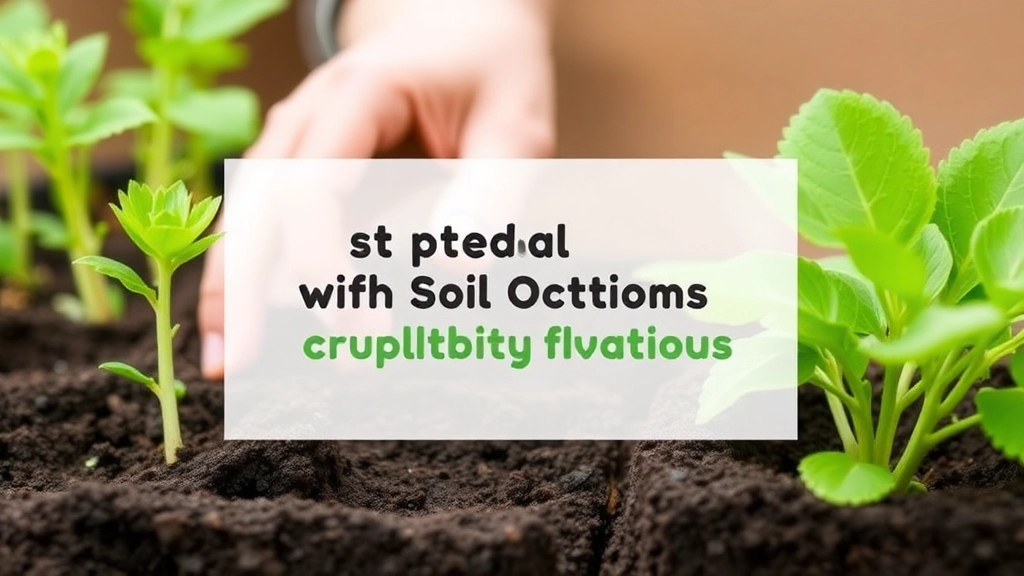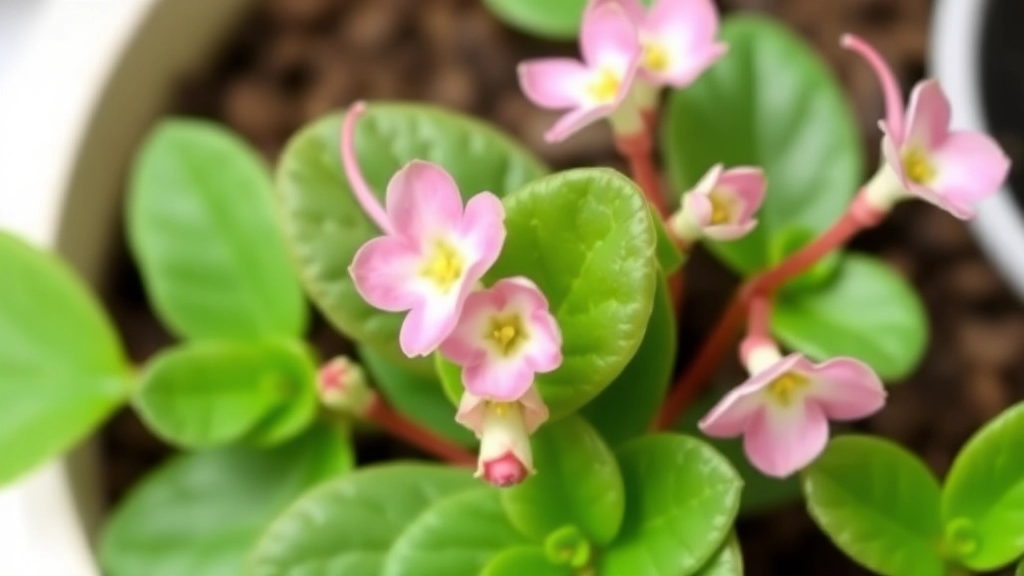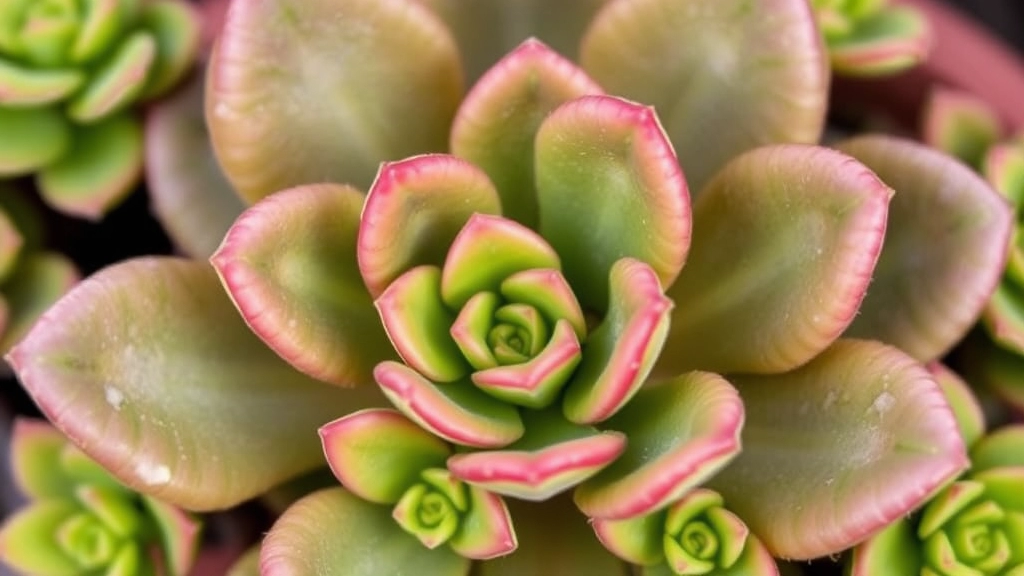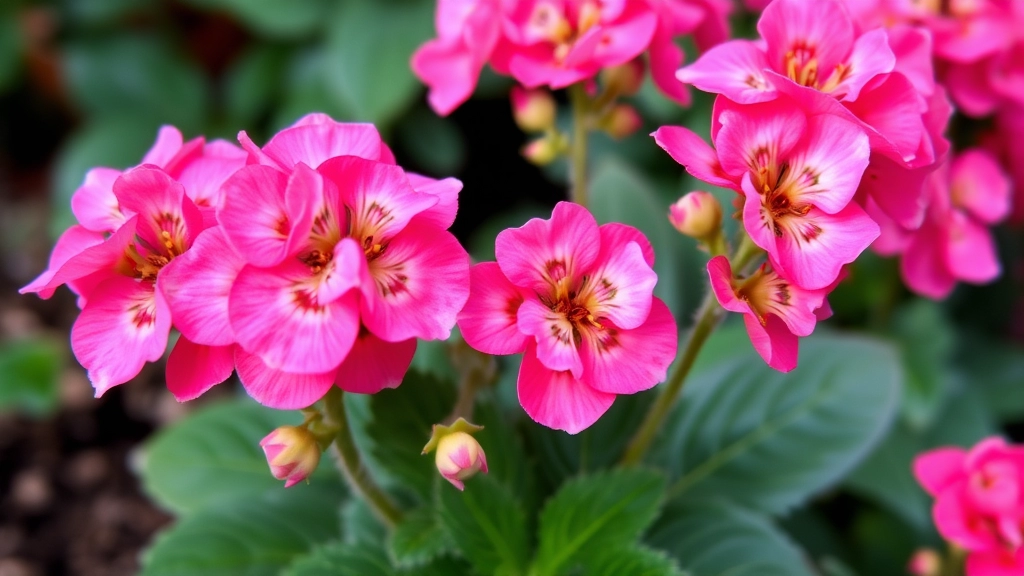Growing the Pink Butterflies Kalanchoe Mother of Thousands
When it comes to growing the Pink Butterflies Kalanchoe Mother of Thousands, it’s all about understanding its unique characteristics and needs. This stunning succulent, often admired for its vibrant pink hues and butterfly-like plantlets, thrives with the right care. Let’s dive into the essentials, from optimal soil and potting options to light and temperature requirements, ensuring your plant flourishes.
Watering Techniques
Watering is crucial for the Pink Butterflies Kalanchoe. Knowing how to prevent root rot by following proper watering techniques makes a world of difference. We’ll also explore the best propagation methods using plantlets and cuttings, and tackle common issues like pest control and overwatering.
Ready to Care for Your Plant?
Ready to give your Pink Mother of Thousands the care it deserves? Let’s get started!
Distinctive Features
- Foliage: The leaves are thick, glossy, and have a striking green hue with a hint of pink along the edges, resembling butterflies in flight.
- Flowers: It produces clusters of small, tubular flowers that bloom in shades of pink and red, adding a pop of colour to any space.
- Growth Habit: This succulent typically reaches a height of about 30-45 cm, making it an excellent choice for both indoor and outdoor settings.
- Lifespan: With proper care, Kalanchoe âPink Butterflies’ can thrive for several years, offering long-lasting beauty.
The combination of its attractive leaves and bright flowers makes it a favourite among plant enthusiasts. For a complete guide on growing and caring for this plant, check out the Complete Guide to Growing and Caring for Kalanchoe Pink Butterflies.
Additionally, if you’re interested in adding this unique succulent to your collection, you can buy Kalanchoe Pink Butterflies online.
Best Soil and Potting Options for Healthy Growth

So, you’ve got your Kalanchoe ‘Pink Butterflies’ and you want to give it the best chance to thrive.
But what kind of soil should you use?
Well, the key to a happy Kalanchoe is well-draining soil.
Here’s what you need to know:
- Cactus Mix: A cactus or succulent mix is ideal. It’s designed to drain quickly, which is crucial for preventing root rot.
- DIY Soil Mix: If you fancy a little DIY, you can mix regular potting soil with perlite or coarse sand. Aim for a 2:1 ratio—two parts potting soil to one part perlite/sand.
- pH Level: Kalanchoes prefer slightly acidic to neutral soil, ideally around 6.0 to 7.0.
When it comes to pots, choose wisely:
- Drainage Holes: Always opt for pots with drainage holes. This helps excess water escape, keeping your plant’s roots healthy.
- Material: Terracotta pots are a great choice. They’re porous and allow moisture to evaporate, which is perfect for succulents.
- Size Matters: Make sure the pot is not too big. A snug fit encourages healthy root growth without holding too much moisture.
Remember, the right soil and pot can make all the difference in keeping your Kalanchoe ‘Pink Butterflies’ vibrant and flourishing.
Light and Temperature Requirements for Optimal Results
Are you struggling to get your Kalanchoe âPink Butterflies’ to thrive? One of the most crucial factors in ensuring its health is understanding its light and temperature needs.
Light Requirements
Kalanchoe âPink Butterflies’ flourishes in bright, indirect sunlight. Here’s how to provide the best lighting:
- Ideal Location: Place your plant near a south or west-facing window.
- Duration: Aim for about 6 hours of light per day.
- Avoid Direct Sunlight: Too much direct sun can scorch the leaves, leading to unsightly browning.
If natural light is limited, consider using a grow light to supplement. This will keep your plant vibrant and encourage blooming. For more detailed tips, check out our complete guide to growing and caring for Kalanchoe âPink Butterflies’.
Temperature Preferences
Temperature plays a significant role in the overall health of your Kalanchoe. Here’s what to keep in mind:
- Optimal Range: Ideally, maintain temperatures between 18°C to 24°C (65°F to 75°F).
- Avoid Cold Drafts: Keep your plant away from chilly windows or air conditioning units.
- Winter Care: During colder months, ensure your Kalanchoe is kept in a warmer environment to prevent stress.
By providing the right light and temperature, your Kalanchoe âPink Butterflies’ will be well on its way to flourishing. For additional care tips, you might also find our complete care guide for Pink Kalanchoe plants useful.
How to Water Kalanchoe ‘Pink Butterflies’ to Prevent Root Rot

One of the biggest concerns for Kalanchoe ‘Pink Butterflies’ enthusiasts is ensuring that their beloved plant thrives without falling victim to root rot.
Understanding Watering Needs
Kalanchoe ‘Pink Butterflies’ is a succulent, meaning it stores water in its leaves. This unique characteristic allows it to tolerate periods of drought. However, overwatering can lead to root rot, a common issue that can quickly jeopardise your plant’s health.
Key Watering Tips
To keep your Kalanchoe healthy, consider the following:
- Check the Soil Moisture: Before watering, insert your finger about an inch into the soil. If it feels dry, it’s time to water.
- Water Thoroughly: When you do water, ensure you soak the soil completely. This encourages deep root growth and helps the plant absorb nutrients effectively.
- Use Well-Draining Soil: A cactus or succulent mix is ideal. This prevents excess moisture from lingering around the roots.
- Watering Frequency: Generally, watering every 2-3 weeks is sufficient, but this may vary based on your environment. During the growing season (spring and summer), you might need to water more frequently.
- Seasonal Adjustments: Reduce watering in the winter months when the plant enters dormancy.
Signs of Overwatering
Be vigilant for these signs:
- Yellowing leaves
- Wilting or mushy stems
- A foul smell from the soil
If you notice any of these, it’s crucial to adjust your watering routine immediately to prevent further damage.
Propagation Techniques: Using Plantlets and Cuttings
When it comes to expanding your collection of Kalanchoe âPink Butterflies’, propagation is both rewarding and straightforward. Many enthusiasts often wonder how to effectively propagate these charming succulents without risking damage to the parent plant.
Common Pests and Solutions for Kalanchoe Succulents

So, you’ve got your Kalanchoe ‘Pink Butterflies’ thriving, but then you notice some little intruders.
What do you do?
Common pests can sneak up on even the best plant parents.
Common Pests to Watch Out For:
- Mealybugs: These little white fluff balls love to hide in the nooks of your plant. They suck the sap, which can weaken your Kalanchoe.
- Aphids: Tiny and green (or black), these guys can multiply quickly. They also feed on the sap and can cause leaf distortion.
- Spider Mites: If you see fine webbing on your plant, it’s likely these buggers. They thrive in dry conditions and can cause leaves to drop.
- Scale Insects: These look like small brown bumps on the stems and leaves. They stick on and suck the life out of your plant.
Solutions to Keep Your Kalanchoe Happy:
- Regular Inspection: Make it a habit to check your plants weekly. Catching pests early can save your plant.
- Neem Oil: A natural pesticide that works wonders. Just mix it with water and spray it on affected areas.
- Rubbing Alcohol: Dampen a cotton ball with rubbing alcohol and dab it on mealybugs or scale insects. They’ll be gone in no time.
- Insecticidal Soap: This is great for soft-bodied pests like aphids. Follow the instructions on the label for the best results.
- Keep It Clean: Wipe down leaves with a damp cloth to remove dust and any potential pests.
- Quarantine New Plants: If you bring a new plant home, keep it away from your other plants for a few weeks. This helps avoid introducing any pests.
Prevention is Key:
- Healthy Environment: Keep your Kalanchoe in a well-ventilated area. Good air circulation can deter pests.
- Avoid Overwatering: This can create a damp environment that pests love. Stick to a proper watering schedule.
Troubleshooting Overwatering and Underwatering Issues
When caring for Kalanchoe ‘Pink Butterflies’, one of the most common concerns is finding the right balance in watering. Are you noticing yellowing leaves or wilting? These symptoms often indicate either overwatering or underwatering.
Recognising Overwatering Symptoms
Overwatering can lead to root rot, a serious issue for your succulent. Here’s what to look for:
- Yellowing Leaves: Leaves may appear soft and mushy.
- Wilting: The plant may droop despite wet soil.
- Foul Odour: A musty smell can indicate rotting roots.
If you suspect overwatering, consider these steps:
- Check Soil Moisture: Use your finger to feel the soil. If it’s soggy, hold off on watering.
- Improve Drainage: Ensure your pot has drainage holes and consider repotting in fresh soil.
- Remove Affected Roots: If root rot is present, trim away the damaged roots and allow the plant to dry out.
Recognising Underwatering Symptoms
On the flip side, underwatering can also harm your Kalanchoe. Signs include:
- Crispy Leaves: Leaves may become dry and shrivelled.
- Stunted Growth: The plant may stop growing altogether.
- Leaf Drop: Leaves may fall off prematurely.
To remedy underwatering:
- Water Thoroughly: Soak the soil until water drains from the bottom.
- Adjust Watering Schedule: Check the soil weekly, and water when it feels dry an inch down.
- Humidity Considerations: In dry environments, consider misting occasionally to increase humidity.
For more detailed advice on caring for your Kalanchoe, you might find our Complete Care Guide for Kalanchoe Panda Plant helpful. Additionally, if you’re dealing with specific issues such as leaf problems, our guide on Why Are My Kalanchoe Leaves Turning Soft? provides valuable insights.
FAQs about Kalanchoe ‘Pink Butterflies’
What type of soil is best for Kalanchoe ‘Pink Butterflies’?
Kalanchoe ‘Pink Butterflies’ thrives in well-draining soil. A cactus or succulent mix is ideal, but you can also create a DIY mix using regular potting soil combined with perlite or coarse sand at a 2:1 ratio.
What should I consider when choosing a pot for my Kalanchoe?
Opt for pots with drainage holes to allow excess water to escape. Terracotta pots are a great choice because they are porous and allow moisture to evaporate. Ensure the pot is not too large, as a snug fit promotes healthy root growth.
How often should I water my Kalanchoe ‘Pink Butterflies’?
Generally, watering every 2-3 weeks is sufficient, but this can vary based on your environment. During the growing season (spring and summer), you might need to water more frequently. Reduce watering in the winter months when the plant enters dormancy.
How can I tell if I’m overwatering my Kalanchoe?
Signs of overwatering include yellowing leaves, wilting or mushy stems, and a foul smell from the soil. If you notice any of these symptoms, adjust your watering routine immediately.
What are common pests that affect Kalanchoe ‘Pink Butterflies’?
Common pests include mealybugs, aphids, spider mites, and scale insects. These pests can weaken your plant by sucking its sap and causing other damage.
How can I prevent and treat pest infestations on my Kalanchoe?
Regularly inspect your plants and use treatments like neem oil, rubbing alcohol, and insecticidal soap. Keep your plant’s environment clean and well-ventilated, and quarantine new plants to avoid introducing pests.
What are the signs of pest infestations on Kalanchoe ‘Pink Butterflies’?
Look for white fluff balls (mealybugs), tiny green or black insects (aphids), fine webbing (spider mites), and small brown bumps on stems and leaves (scale insects). Early detection is key to effective treatment.
Why is well-draining soil important for Kalanchoe ‘Pink Butterflies’?
Well-draining soil is crucial to prevent root rot, a common issue with succulents. It allows excess moisture to escape, keeping the roots healthy and promoting optimal growth.
How should I adjust my watering schedule for different seasons?
During the growing season (spring and summer), you may need to water more frequently. In the winter months, reduce watering as the plant enters dormancy and requires less moisture.
What materials can I use for a DIY soil mix for Kalanchoe ‘Pink Butterflies’?
You can mix regular potting soil with perlite or coarse sand. Aim for a 2:1 ratio—two parts potting soil to one part perlite or sand—to create a well-draining soil mix.
References
-
The Spruce – Growing Kalanchoe Succulents
-
Gardening Know How – Kalanchoe Pest Control
-
Better Homes & Gardens – Kalanchoe
